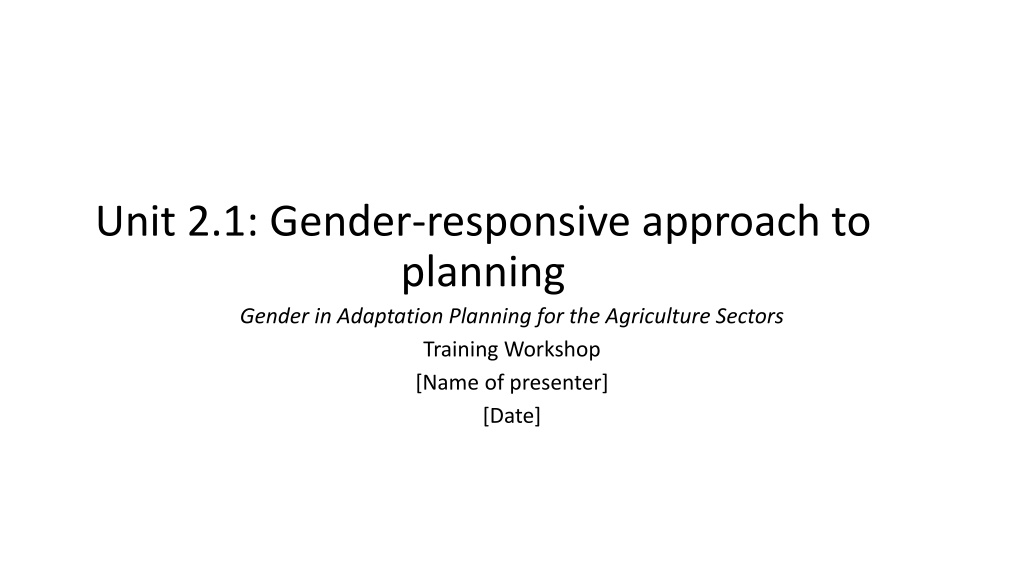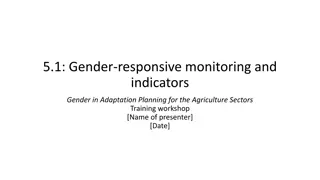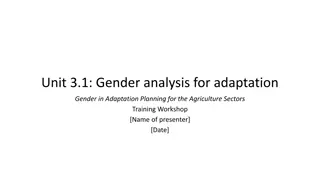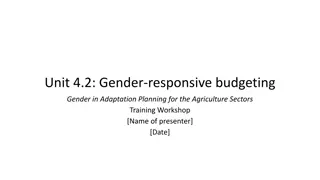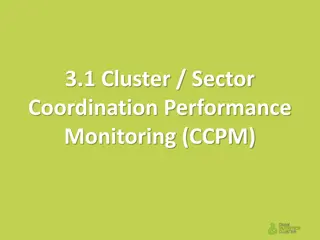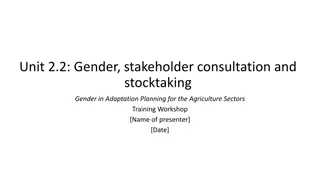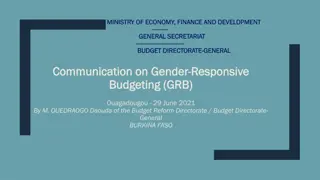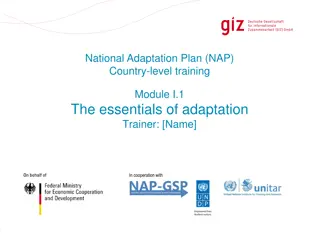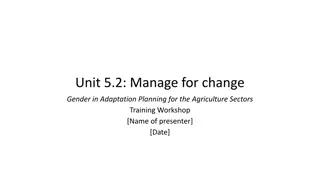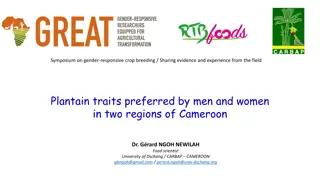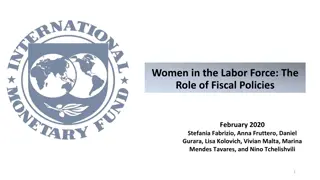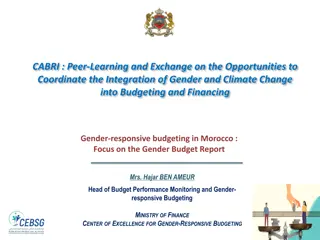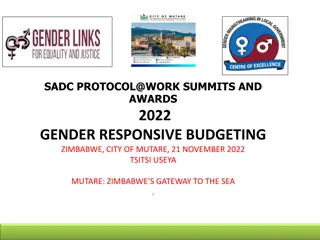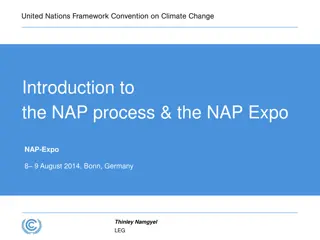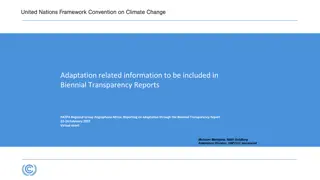Gender-Responsive Approach to Adaptation Planning in Agriculture
This workshop explores the importance of gender-responsive adaptation planning in the agriculture sector, focusing on key elements of good governance, principles of gender equality, and approaches to address gender disparities in adaptation practices. The emphasis is on equitable participation, resource access, and decision-making processes for both women and men.
Download Presentation

Please find below an Image/Link to download the presentation.
The content on the website is provided AS IS for your information and personal use only. It may not be sold, licensed, or shared on other websites without obtaining consent from the author. Download presentation by click this link. If you encounter any issues during the download, it is possible that the publisher has removed the file from their server.
E N D
Presentation Transcript
Unit 2.1: Gender-responsive approach to planning Gender in Adaptation Planning for the Agriculture Sectors Training Workshop [Name of presenter] [Date]
Learning outcomes Define some of the key elements of good governance and why it is important in the context of gender- responsive adaptation planning. Define Explain Explain what is meant by gender-responsive adaptation. List List examples of actions that can be taken to mainstream gender into an adaptation plan. Identify the roles of different stakeholders in supporting a gender-responsive approach to adaptation planning in the agriculture sectors. Identify
Principles of good governance Participation Empowerment Responsiveness Process of communication, having a role in decisions Process leading to greater awareness, participation, decision- making power and control Institutions have full knowledge of, and respond to, the needs and priorities of target groups Consensus-oriented Inclusiveness Equality Consider different viewpoints to reach broad-based agreement on how to proceed in best interests of women and men Involve a selection of people from key stakeholder organizations Policy measures address structural inequalities, including gender inequality Non-discrimination Transparency Accountability Making sure that a plan or policy does not reinforce any discriminatory practices by benefiting certain groups at the expense of others Ensuring decisions are made and actions implemented in accordance with rules, norms and regulations that are known and understood by all whom they affect Individuals and organizations have an obligation to explain and justify decisions and actions to those affected
Gender-responsive adaptation Adaptation practices, projects or plans that contribute to gender equality through: Recognition of gender differences in adaptation needs, opportunities and capacities Equitable participation and influence by women and men in adaptation decision-making processes Equitable access to financial resources and other benefits resulting from investments in adaptation between women and men Source: NAP Global Network. 2017. A Framework for Gender- Responsive National Adaptation Plan (NAP) Processes
Approaches to addressing gender: The gender integration continuum
Integrating/mainstreaming gender in adaptation planning Definition: Assess the implications for women and men of any planned action, including legislation and policies. A strategy for achieving gender equality and improved adaptation outcomes by overcoming marginalization of under-represented groups within
Integrating gender in adaptation planning requires different skills and actions Addressing attitudes and improving knowledge Ensuring a gender- responsive planning process Analysing the problem and solutions Formulating the plan and gender- responsive budgeting Monitoring and managing for change Clarifying values and attitudes around the importance of addressing gender issues in climate change adaptation (Unit 1.2) Improving understanding of basic concepts for integrating gender in agricultural adaptation (Unit 1.2) Promoting principles of good governance (Unit 2.1) Conducting inclusive stakeholder consultation and stocktaking to identify gender- responsive adaptation initiatives and gaps (Unit 2.2) Conducting a gender analysis in the agriculture sector to inform the adaptation plan (Unit 3.1) Assessing gender dimensions of climate vulnerability (Unit 3.2) Prioritizing gender- responsive adaptation options (Unit 3.3) Formulating an adaptation plan document to address gender issues (Unit 4.1) Allocating resources of an adaptation plan using gender- responsive budgeting (Unit 4.2) Monitoring the implementation of the plan using gender indicators (Unit 5.1) Improving gender capacity at all levels plus meeting goals (Unit 5.2)
Roles in mainstreaming gender Everyone involved in adaptation planning for the agriculture sectors has a role in addressing gender What are some actions different actors could take to mainstream gender into adaptation planning?
Example Stakeholders roles in addressing gender in the process of developing a NAP for the agriculture sectors, Uganda
